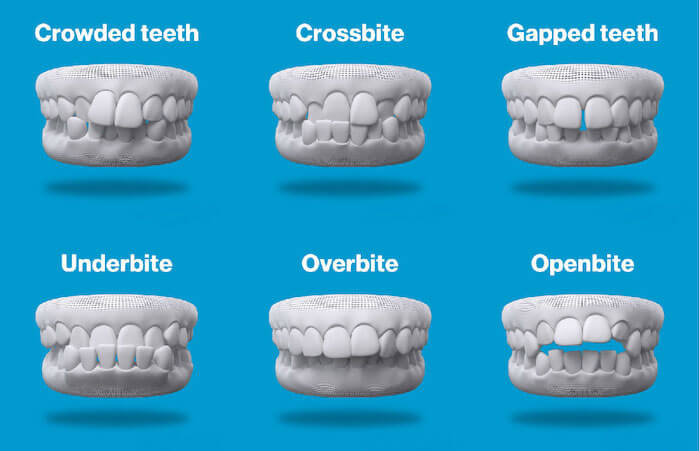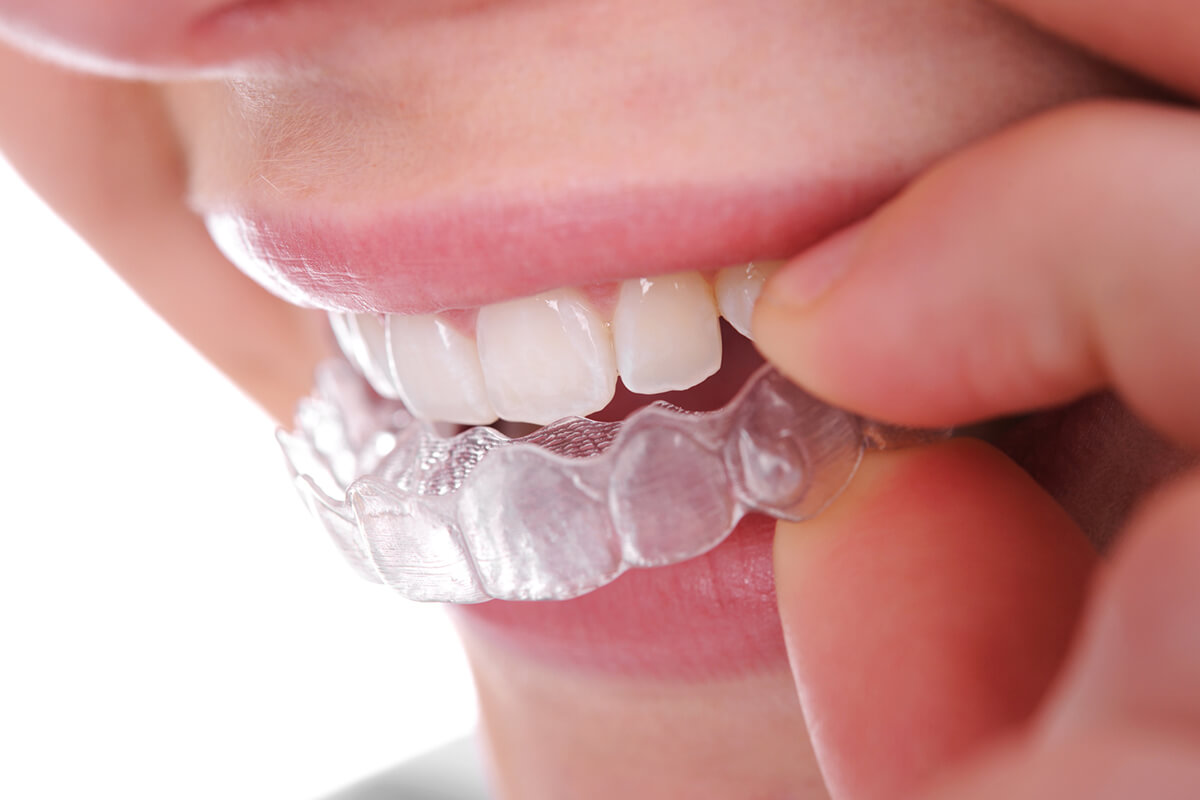The Ultimate Comparison: Invisalign vs. Traditional Braces for Adults
The Ultimate Comparison: Invisalign vs. Traditional Braces for Adults
Blog Article
Invisalign vs. Traditional Braces: Which Alternative Is Right for You?
When considering orthodontic treatment, the choice between Invisalign and traditional braces offers numerous important variables that merit mindful examination. Invisalign supplies a discreet alternative with removable aligners, while traditional dental braces supply a much more noticeable yet efficient solution for severe imbalance. Each option encompasses distinctive benefits and drawbacks related to visual appeals, comfort, treatment period, and price. Comprehending these subtleties is important for making an informed decision that lines up with your individual preferences and lifestyle. The concern continues to be: which alternative will best meet your orthodontic needs and assumptions?
Summary of Treatment Alternatives

In comparison, traditional braces contain metal braces and cords that are bonded to the teeth. This technique uses continuous stress in time to accomplish alignment. While efficient for intricate orthodontic issues, typical braces need normal visits for modifications and can posture challenges in maintaining oral health as a result of the trouble of cleaning around brackets and cables.
Both alternatives have their benefits, and the option commonly depends upon specific dental conditions, way of living choices, and patient compliance. Eventually, getting in touch with an orthodontic professional is important for establishing the most suitable treatment plan customized to specific demands. Understanding the nuances of each option can considerably influence the overall success of orthodontic therapy.
Aesthetic Factors To Consider
A significant factor influencing the choice between Invisalign and standard dental braces is the aesthetic charm each treatment provides. Invisalign aligners are crafted from clear plastic, making them essentially unseen when worn. This discreet appearance is especially attracting adults and teens that might really feel uneasy regarding their orthodontic treatment. The ability to keep an all-natural smile throughout the positioning procedure can substantially improve the client's confidence in social and professional settings.
On the other hand, standard braces contain metal braces and wires, which can be extra visible. While advancements in orthodontic modern technology have caused the development of smaller sized brackets and tinted elastics, traditional dental braces still maintain a more obvious profile. For some people, the visibility of braces might discourage them from looking for required therapy.
Ultimately, the option in between Invisalign and conventional dental braces may hinge on individual preferences concerning looks. Patients who focus on discernment frequently lean towards Invisalign, while those that are less concerned regarding presence may choose standard dental braces. Understanding the aesthetic ramifications of each alternative is essential for making a notified choice that straightens with one's lifestyle and preferences.
Comfort and Convenience

In regards to comfort, Invisalign aligners are removable, enabling people to appreciate their preferred foods without restriction and keep optimum dental hygiene. Cleaning and flossing are streamlined, as the aligners can be gotten during these regimens, whereas standard braces call for cautious maneuvering around wires and braces.
Furthermore, Invisalign's progressive system permits for fewer orthodontic gos to. People normally receive numerous sets of aligners at once, which can enhance the treatment procedure and decrease time invested in the orthodontist's chair. In contrast, traditional dental braces necessitate routine adjustments, making them much less convenient for those with hectic timetables. Invisalign. Generally, the comfort and comfort of Invisalign make it an appealing option for many people looking for orthodontic treatment.
Therapy Duration and Efficiency
While both Invisalign and traditional braces are efficient in dealing with dental misalignments, the period of therapy can vary considerably in between the 2 options. Usually, Invisalign therapy can take anywhere from 12 to 18 months, depending on the complexity of the situation. The clear aligners work by progressively changing teeth into their desired settings, and routine follow-ups with an orthodontist aid make certain progress remains on the right track.
In comparison, typical dental braces frequently need a longer commitment, normally ranging my latest blog post from 18 months to 3 years. This is because of their set nature and making use of cords and braces, which can be a lot more reliable for extreme imbalances and intricate instances (Invisalign). The therapy performance of standard dental braces is well-documented, as they permit exact modifications and higher control over tooth movement
Ultimately, the choice between Invisalign and traditional dental braces might rest on both the expected treatment duration and the details oral concerns at hand. Consulting with an orthodontist is essential, as they can offer tailored referrals based upon private needs, ensuring the picked technique aligns with desired timeframes and outcomes.
Price Comparison and Insurance Alternatives
Expense plays a considerable role in the decision-making procedure for individuals considering orthodontic therapy, continue reading this whether selecting Invisalign or traditional dental braces. Typically, the price of Invisalign varieties from $3,000 to $8,000, while traditional dental braces usually cost in between $2,000 and $6,000. Elements affecting these prices include the complexity of the case, the period of treatment, and geographical place.
Insurance policy coverage can substantially influence out-of-pocket costs. Several dental insurance policy plans provide partial protection for orthodontic treatments, yet the specifics can vary extensively. It is important for clients to assess their insurance coverage to identify the level of coverage for either alternative. Generally, standard dental braces may be a lot more regularly covered by insurance coverage strategies contrasted to Invisalign, which some insurance companies classify as a cosmetic procedure.
Furthermore, numerous orthodontic techniques offer flexible repayment plans, making both therapy choices extra accessible. Patients should ask about prospective financing choices and discount rates for in advance repayments. Examining the complete price, consisting of insurance policy advantages and layaway plan, is necessary for making an educated choice that lines up with both aesthetic preferences and budget considerations.

Verdict
In summary, the choice between Invisalign and conventional braces hinges on multiple factors, consisting of visual choices, comfort, treatment duration, and price. Invisalign supplies a very discreet, removable choice that helps with oral useful link health and nutritional versatility, while conventional braces might be preferable for complicated dental issues and usually come with a lower price factor. Eventually, examination with an orthodontist is important to evaluate specific scenarios and figure out the most ideal therapy choice for achieving optimum oral alignment.
When taking into consideration orthodontic treatment, the choice in between Invisalign and conventional dental braces provides several crucial elements that warrant cautious evaluation.Contrasting Invisalign and conventional dental braces reveals distinctive treatment alternatives for orthodontic adjustment.While both Invisalign and typical braces are reliable in fixing oral misalignments, the period of treatment can vary significantly in between the 2 choices.Price plays a significant duty in the decision-making process for individuals taking into consideration orthodontic treatment, whether choosing for Invisalign or traditional braces.In recap, the choice between Invisalign and typical braces hinges on several factors, including visual choices, comfort, treatment period, and price.
Report this page